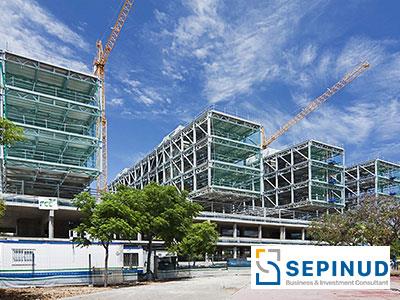Feasibility Study of Establishing Fish Farming Complex (Fish in cage)
Abstract:
Shortage of fresh water resources, food and environmental pollutions are most important
challenges the human that has put our lives in danger. In addition, regarding the high demand
for fish in the world, decrease of fishing, and priority to use fresh water for agricultural
activities and economic efficiency of Fish in Cage method is very pervasive and well-noticed.
In recent years, the government has supported fish farmers by granting them the permits to run
their farms in rivers and seas, as there are very reasonable running costs and benefits.
Moreover, fish in cage is becoming a very incisive method because of low design and
maintenance costs, high production capacity due to wide extent of the sea, high quality
products, reducing food costs (regarding the food resources in rivers and seas), creating jobs,
low risk, and more safety have made Fisheries Organization and the government plan and
support this method to improve fish farming in Iran.
Fish in cage, a new method of fish farming that involves raising fish in cages located in rivers
or the seas, is known as a new method in aquaculture.
Considering feasibility studies conducted by Iran and Norway, it is assumed that there is a good
potential to produce 100 thousand tons of fish in the south of Iran.
Advantages of Fish in cage method:
- Easy operation in comparison with old fish farming methods (tanks)
- High rate in production and low operating costs
- Standard use of natural water resources
- energy-saving process
- Easy to transport and improve
- Great quality in order to use natural resources
According to studies, Qeshm Free Zone has the potential to become the hub of fish farming
(fish in cage) in the country due to vast resources and the ability to import technology from
developed countries. As it is determined in government’s plans, it is expected to produce 200
thousand tons of fish by this method and Qeshm Free Zone is expected to produce 85 thousand
tons which makes this province a hub for fish farming in Iran.
Existence of 1500 area and great deal of resources has made Qeshm Free Zone a pioneer
in fisheries industry and marine products such as cosmetic products, food and rocket propellant
from seaweeds.
It is very crucial to consider enough depth to choose a place for running a fish in cage farm; as
studies demonstrate, minimum depth needed for fish cage is 10 meters, and Qeshm Free Zone
has great potential in this case since the minimum depth (10 meters) is close to seashore of the
Free Zone. These results reduce maintenance costs, easy transportation, etc. tropical weather
and monsoon winds, diverse types of fish, Fisheries Organization’s support, and proximity to
Free Zones are other factors that have positive influence on fish farming in Qeshm.
Access to free waters and broad naval transportation, unique geographical and economic
location in Persian Gulf and the Oman Sea, 20-years tax exemption (in order to encourage
investors for investment), Exemption from value-added taxes and customs duties are salient
features that make Qeshm Free Zone a convenient place for investment in different sectors.
Advantages of investment in Qeshm Free Zone:
- Inexpensive and skilled workforce
- Inexpensive energy and land
- exemption from customs duties to import machinery and products
- 20-year tax exemption (due to Free Zone’s regulation)
Purpose of the plan is to establish a fish framing site with the ability of producing fish by “fish
in cage” method. Fish farming had a constant growing trend in the last 10 years in Iran,
following the statistics from 2007 (562.422 thousand tons) to 2016 (more than 1 million ton)
in which Hormuzgan province share was a total production of 255 thousand tons.


.jpg)



.jpg)
.jpg)
.jpg)
